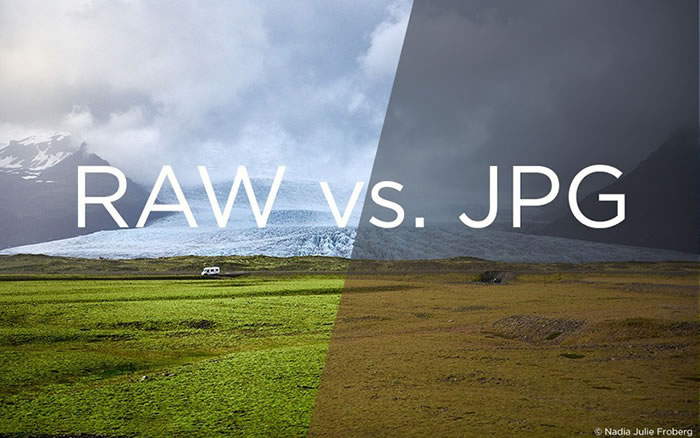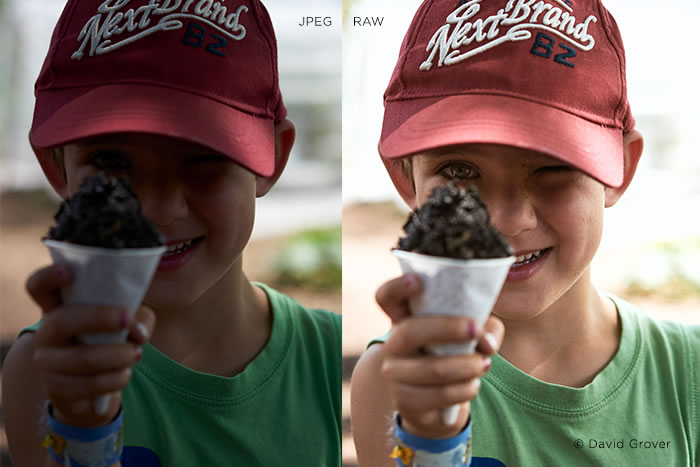The Importance of RAW Format in Photography
Wondering how you can get more contrast, deeper colors, and a wider tonal range out of your photographs? One of the simplest changes you can make to push your photography to the next level is to switch from shooting in JPEG format to shooting in RAW format.
Let’s take a closer look at what RAW format is, why you should switch to shooting photos in RAW format and how you can set up your camera to shoot RAW photos.
What is RAW? (courtesy of Wikipedia)
A camera raw image file contains minimally processed data from the image sensor of either a digital camera, a motion picture film scanner, or other image scanner. Raw files are named so because they are not yet processed and therefore are not ready to be printed or edited with a bitmap graphics editor. Normally, the image is processed by a raw converter in a wide-gamut internal color space where precise adjustments can be made before conversion to a "positive" file format such as TIFF or JPEG for storage, printing, or further manipulation. There are dozens of raw formats in use by different manufacturers of digital image capture equipment.
 Image courtesy of CaptureOne
Image courtesy of CaptureOne
RAW Format vs. JPEG Format
Today’s digital cameras typically have two different image formats for you to choose between. The first is JPEG format, which is the default on most cameras. The second is RAW format, also known as NEF format on Nikon cameras or CR2 format on Sony cameras.
There are several important differences between RAW and JPEG image formats that every photographer should know about.
The most obvious difference is that RAW image files take up much more storage space than JPEG image files. For example, if you have a 20-megapixel camera, a RAW format photo from that camera might be 20 MB in size, while the same photo in JPEG format might be just 4 MB in size.
Another key difference between RAW and JPEG photos is how easy they are to view and share. Viewing RAW format photos typically requires specialized software, such as a photo editing suite. JPEG photos, on the other hand, can be easily looked at with almost any standard file viewer. In fact, most of the images you see while surfing the internet are JPEG images.
While both RAW and JPEG photos can be edited, RAW photos give you much more flexibility to change the look and style of your photo. With an image in RAW format, it’s easy to recover highlights that initially appear blown or bring details out of the shadows. You can also amplify the colors in your image and add contrast without losing crispness. With an image in JPEG format, you cannot recover details in the highlights or shadows and every change adds digital noise to your photo.
Why Do RAW Images Take Up More Storage Space?
In order to understand why RAW images are so much larger than JPEG photos, you need to understand the process that happens inside your camera when you take a photo.
When you snap the shutter, your camera’s image sensor captures a huge amount of data about the light, color and details in the scene in front of you. All that data is initially recorded in RAW format, even if your camera is set to save photos in JPEG format.
If your camera is set to record RAW photos, that’s the end of the process. Your photo is saved to your memory card for later viewing and editing.
If your camera is set to record JPEG photos, another processing step takes place. The camera strips away data that it considers ‘extraneous,’ like information about the brightest and darkest parts of your image and the total color range. The stripped-down photo, now much smaller in size, is compressed and saved to your memory card as a JPEG image. The extra information that was tossed away is deleted along with the original RAW photo.
One of the biggest downsides to shooting RAW photos is that since they’re so large, they can quickly take up your entire memory card. When that happens, it’s tempting to delete photos from your camera on the spot instead of first backing them up on your computer.
This isn’t a great idea because you can accidentally delete important photos and you won’t have a backup available. Thankfully, if you do delete photos from your camera’s SD card by accident, you can still get them back by using a tool like Yodot Photo Recovery from Yodot Data Recovery. Both of these programs can recover RAW files as well as JPEG photos.

Image courtesy of CaptureOne
How to Choose Your Image Format in Most Common Cameras
Wondering how to switch from JPEG format to RAW format in your camera? It’s easy to do.
If you have a Canon Rebel series DSLR camera, you’ll find the image format setting in the camera’s main menu. Push the Menu button, then find the menu item labeled Quality. Push the Set button, then change the setting from L (which stands for Large JPEG) to RAW.
If you have Nikon camera like the D7200, push the Menu button and then navigate to the camera icon. Select Image Quality and then switch from JPEG fine to NEF (RAW).
If you have a Sony camera like the A6300, push the Menu button and navigate to the camera icon. Then select Quality and switch from Fine to RAW.
Why Should You Shoot in RAW Format?
Shooting in RAW format is one of the simplest changes you can make to improve your photography.
By saving all of the data your camera’s image sensor captures, you can take photos with a wider dynamic range. That means you can capture photos with both bright highlights and dark shadows, and bring out details in both during your editing process. Shooting in RAW format also gives you richer colors and enables you to add contrast and clarity to your images without creating digital noise.
To fully take advantage of RAW format images, you will need a photo editing software. However, if you don’t want to spend time editing your photos, you can still convert them to smaller, easier to share JPEG images at any time. If you make this conversion on your computer instead of on your camera, you can keep an archive of your full-size RAW photos to return to in the future.
With that in mind, the only significant downside to shooting in RAW vs. JPEG is that RAW photos take up more space on your camera’s memory card and your computer’s hard drive. Since photo storage is relatively inexpensive, this isn’t a problem for most photographers. Plus, the added detail you get out of your images is well worth it.
Bio: Michael Graw is a freelance photographer and writer and the owner of Wandering Sole Studios. Michael’s photography work focuses on landscape, action sports, and adventure. His writing covers photography, technology, the environment and more. Michael is based in Bellingham, Washington.





















